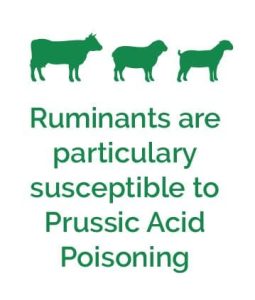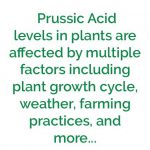What is Prussic Acid Poisoning?
- Prussic acid, or hydrocyanic acid, is absorbed from digested feed into the cow/sheep where it attaches to haemoglobin, taking the place of oxygen in the blood.
- This causes following symptoms in the animal: within 15-20 minutes you may see symptoms including staggering, laboured breathing, spasms and foaming at the mouth. Affected animals often lie down, stretched out, and may thrash about. Mucous membranes and blood will be bright pink.
- If levels are high enough, or treatment is not administered quickly, the only symptom you may see is a dead animal.
- Horses, pigs and other non-ruminant animals are less affected by prussic acid because their stomachs convert it to less toxic formic acid and ammonium chloride.
Prevention and Treatment
- Prussic acid poisoning can be treated effectively if the treatment is administered immediately after the first poisoning symptoms appear.
- Feed with higher levels of prussic acid can be mixed at low levels and fed as part of a total ration, to slow down the rate of prussic acid entering the blood.
- Introduce stock slowly to feed (eg. over several days) and do not allow hungry stock to gorge on the product.
- Some licks and supplements can assist. Talk to your advisor or input suppliers.
- Feed Central recommends that you conduct your own research including web and via your regular advisors.
How Does It Build Up in Plants?
- Prussic acid is present in most sorghums, but some species and varieties contain less than others. It is also present in other plants in the sorghum family, such as Johnson Grass, Sudan Grass and Shattercane and some members of the Couch family, Native Fuschia, some Acacias, Rosewood and Linseed meal.
- Most of the prussic acid in plants exists as a non-poisonous chemical called dhurrin (Rhykerd, n.d.).
- Also present in the sorghums is a material called emulsion, which, under certain conditions, can react with dhurrin to form prussic acid (also referred to as hydrocyanic acid). If plants are damaged, such as by freezing, chewing, insect damage, heat stress, wind damage, crushing or trampling, the emulsion-dhurrin reaction is enhanced, freeing larger quantities of poison (cyanide) (Rhykerd, n.d.).
- Once converted, the poison is known as ‘free cyanide’, Free cyanide can evaporate gradually from the plant, but only to some extent, There is still the potential for further release of stored cyanide if the dhurrin/emulsion reaction occurs. This also occurs due to chewing and in the rumen (due to bacteria breaking down the plant cells) and allowing this emulsion/dhurrin reaction to produce prussic acid.
- Prussic acid is extremely poisonous. A concentration of free cyanide plus dhurrin (known as total cyanide) greater than 0.1 percent (1000 ppm or mg/kg) of plant dry matter is considered highly dangerous. (Rhykerd, n.d.)
What Can Affect Prussic Acid Levels in Plants?
 Part of the Plant
Part of the Plant
- Leaf blades normally contain higher levels than leaf sheaths or stems
- Younger (upper) leaves have more prussic acid than older leaves
- Tillers and branches (“suckers”) have the highest levels, because they are more leaf than stalk
- The heads are low in Prussic Acid
- The seeds (grain) contain none
- See also our Nitrate Factsheet for information on other toxins in the plant.
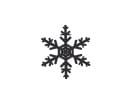
Freezing
- Frost may kill only the tops of sorghum plants (mainly leaf), leaving the lower portion (mainly roots and stalk) alive
- Free cyanide in frost affected sorghum does not decline until wilting begins,but even then it will only decrease in the wilted/dried out parts
- New shoots or further green growth is apt to have higher levels
- Further stress of any type will cause the plant to maintain higher levels in the new/re-growth
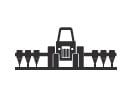
Fertiliser
- High N rates applied to soils deficient in phosphorus and potassium often cause levels to increase.
 Plant Maturity
Plant Maturity
- Highest levels are reachedbefore the boot stage (all leavesfully expanded and just prior toemergence of the head) as this is when proportion of leaf is highest
- As plants mature, the stalks makeup a greater proportion of the plant,causing prussic acid content in the plant as a whole to decrease.

Drought
- Drought affected plants have a higher risk of dangerous levels because they are mostly leaves.
- Sorghum grown in drought may retain high levels, even if made into hay or silage.
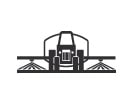
Herbicides
- 2,4-D may cause prussic acid content to increase in forages. The effect may last several weeks.
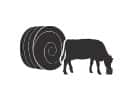 Grazing or Baling for Hay/Silage
Grazing or Baling for Hay/Silage
GRAZING
- Grazing carries a risk due to stocks electively eating the leaves, resulting in a greater amount of cyanide being consumed per kilogram of dry matter(kg DM)
HAY
- Cutting and conditioning both result in damage to plant cells, enabling some dhurrin to be converted into free cyanide
- Free cyanide is decreased slightly during curing, baling and storage due to evaporation
- Animals eating hay consume more stalk reducing the overall concentration of prussic acid per kgDM (See Nitrate Fact sheets for other toxin information)
- Although making the crop into hay will make it slightly less toxic, if the levels were very high to start with, this reduction may still leave you with a product that is dangerous levels of total cyanide.
SILAGE
- As with hay, ensiling the crop,especially if chopped, will damage plant cells reducing both dhurrin levels and free cyanide
- Microbial breakdown during fermentation will also reduce the total cyanide levels in the final product
- Ensiling for at least 3 weeks has been shown to reduce Prussic Acid by 50%
- Less total cyanide remains after ensiling, compared to making hay from the crop, but, again there is a small risk that toxic levels remain.
REFERENCING & FURTHER RESOURCES
Feed Central has used information from the following sources to compile this fact sheet. We recommend growers review this and other information.
DPI. (2019). [online] Available at: http://www.dpi.nsw.gov.au/__data/assets/pdf_file/0013/111190/prussic-acid-poisoning-inlivestock.pdf [Accessed 5 Feb. 2019].
Johnson, K. and Rhykerd, C. (2019). Minimizing the Prussic Acid Poisoning Hazard in Forages. [online] Forage Information System. Available at: https://forages.oregonstate.edu/fi/topics/pasturesandgrazing/grazingsystemdesign/prussicacidpoisening [Accessed 6 Feb. 2019].
Veterinary Manual. (2019). Overview of Cyanide Poisoning – Toxicology – Veterinary Manual. [online] Available at: https://www.msdvetmanual.com/toxicology/cyanide-poisoning/overview-of-cyanide-poisoning [Accessed 6 Feb. 2019].
Agrilifecdn.tamu.edu. (2019). [online] Available at: https://agrilifecdn.tamu.edu/coastalbend/files/2016/06/PUB_forage_Nitrates-and-Prussic-Acid-in-Forages.pdf [Accessed 6 Feb. 2019].
Obtaining Feed Samples for Testing
Taking a test sample is simple … Just follow the following steps
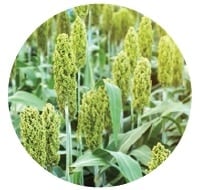
Sampling a
STANDING CROP
- Choose a diagonal line to walk along and stop every 100 steps or so (fewer if paddock is small, more if paddock is large),
- Pull out by the roots the plant that is at your right foot each time.
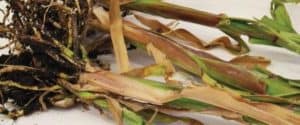
- Put all collected plants into a garbage bag. Ten sample points (plants) should be sufficient for most paddocks.
- After collection, choose a sufficient amount of the plants you have collected, cut off the roots (cut the stem from the roots at cutting or grazing height) and roll the plants up as tightly as you can, bending the stalk if you have to, so that they fill a large clipseal/sealable plastic bag, such as the Feed Central sample bag.
- Squeeze out or vacuum extract as much air as possible then seal the bag to prevent air getting back in.
- Keep sample in the fridge (don’t freeze) until time to post to us. Send Express Post if possible. Sample will reach us in good condition if these instructions are followed.
- Express Post to Feed Central 10775 Warrego Highway Charlton, Toowoomba Qld 4350 (Australia Post provides a good service, but courier services are also available),
OR… Use the On-Farm Test Kit provided by Feed Central.
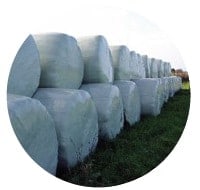
Sampling
HAY OR SILAGE
- To avoid getting results that under or over estimate the true levels of cyanide, sample the interior of a number of bales, ideally using a bale corer/probe to take the sample.
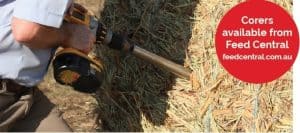
- If no corer is available, be sure to take the sample from at least 100mm (4 inches) depth inside the bale.
- If silage is in a stack, sample a freshly opened surface, digging as deep as you can.
- Choose a sufficient amount of the material you have collected so that you half fill a large clipseal/sealable plastic bag, such as the Feed Central sample bag (approx 500g).
- Squeeze out or vacuum extract as much air as possible then seal the bag to prevent air getting back in.
- Keep sample in the fridge (don’t freeze) until time to post to us. Send Express Post if possible. Sample will reach us in good condition if these instructions are followed.
- Express Post to Feed Central 10775 Warrego Highway Charlton, Toowoomba Qld 4350 (Australia Post provides a good service, but courier services are also available),
OR… Use the On-Farm Test Kit provided by Feed Central.
PLEASE NOTE: Feed Central testing services and test kits are designed to give information in a convenient manner. Prussic acids and nitrates are complex and highly variable, for example levels can change in the paddock / product over time, levels are different all over the paddock, sampling and animal management practices differ from farm to farm (there are many variables). Feed Central is not endeavouring to provide an absolute / risk-free answer or test. Our service and the testing kit should be used as a guide only and should never take the place of best practice management techniques. Farmers should seek alternative advice from their normal farm consultants and input suppliers; undertake their own independent research and combine this with their own experience to determine best practice for their property / animals.
